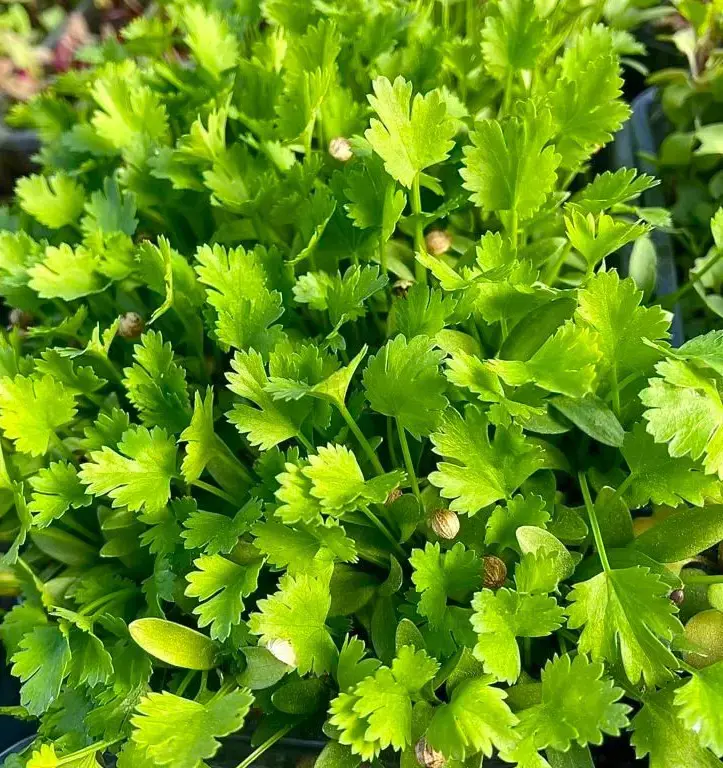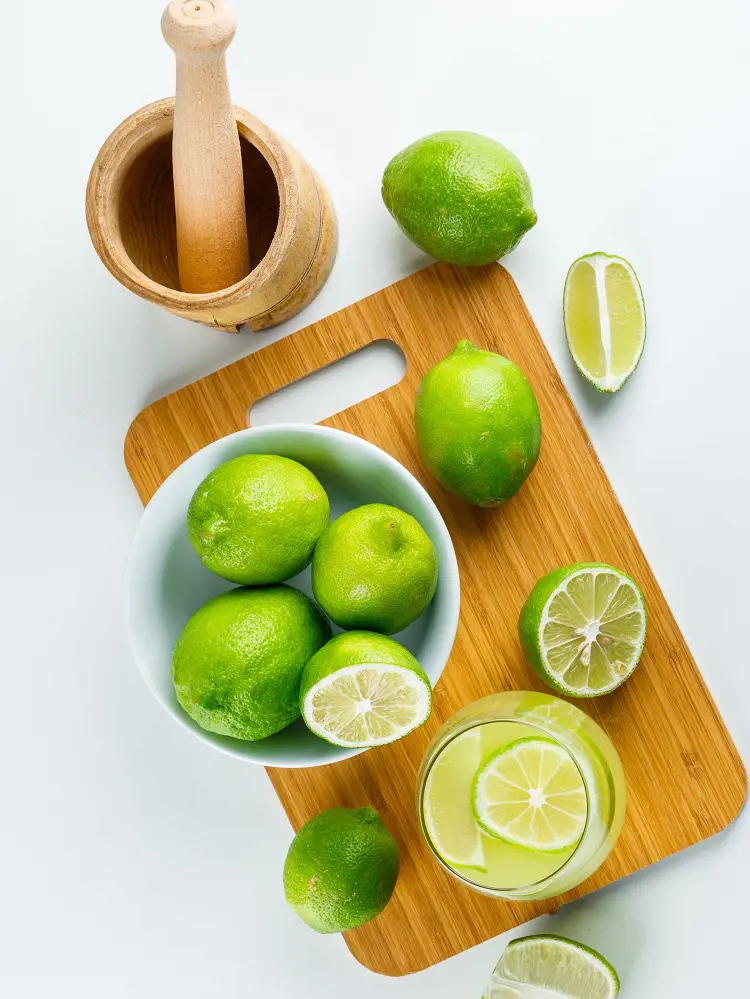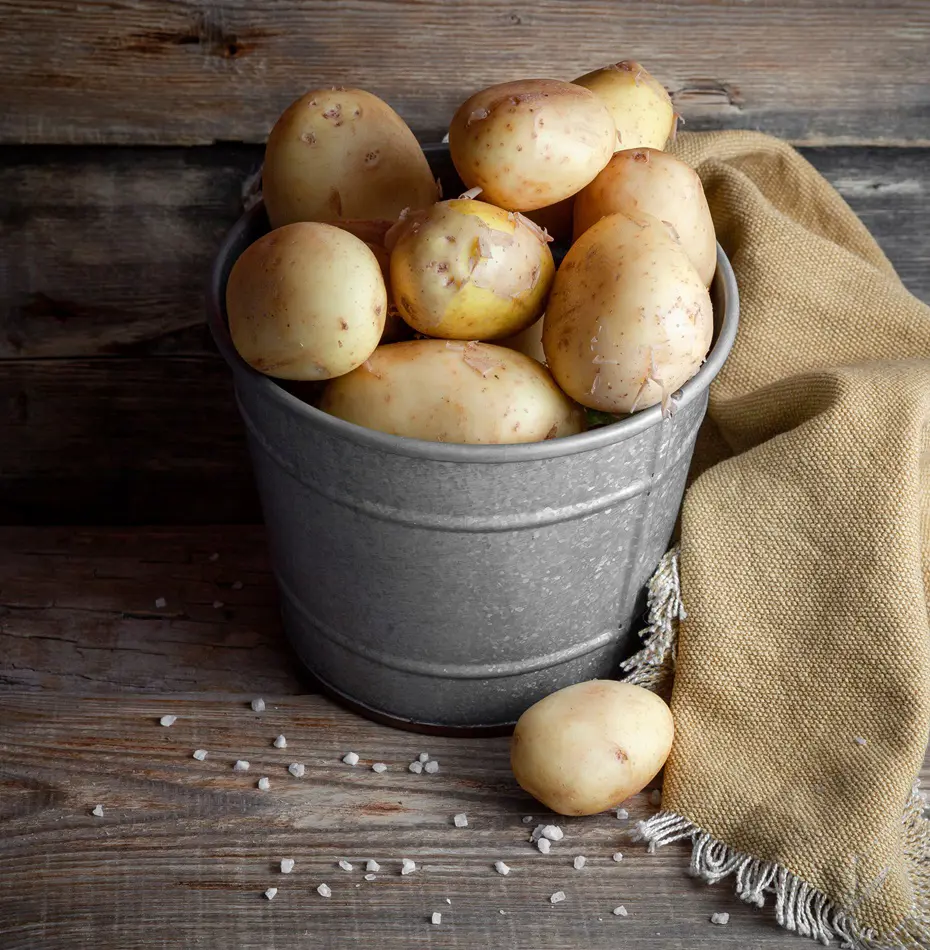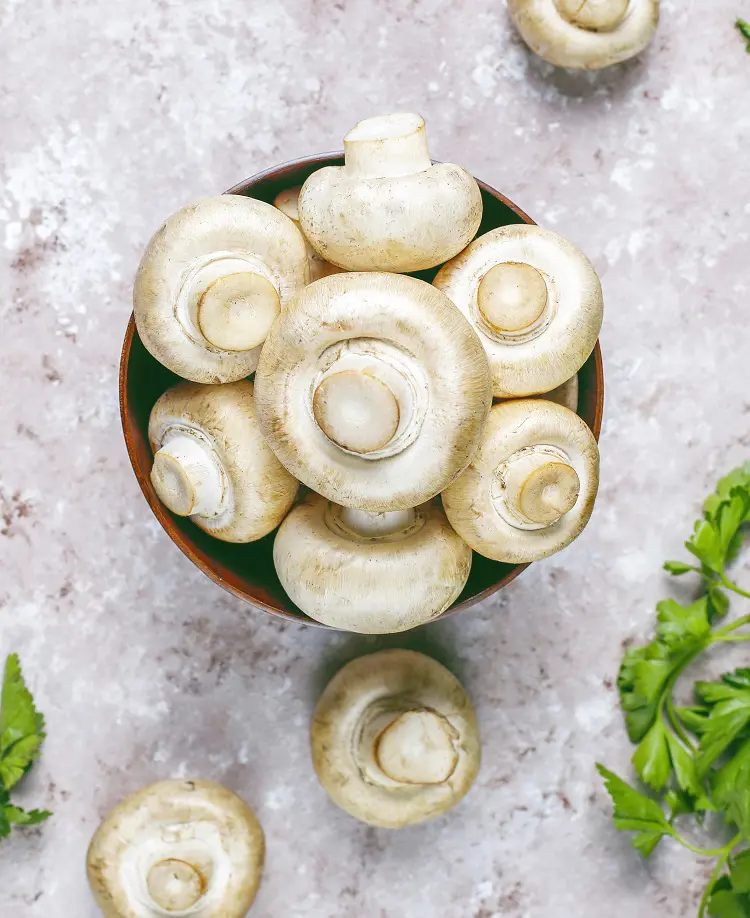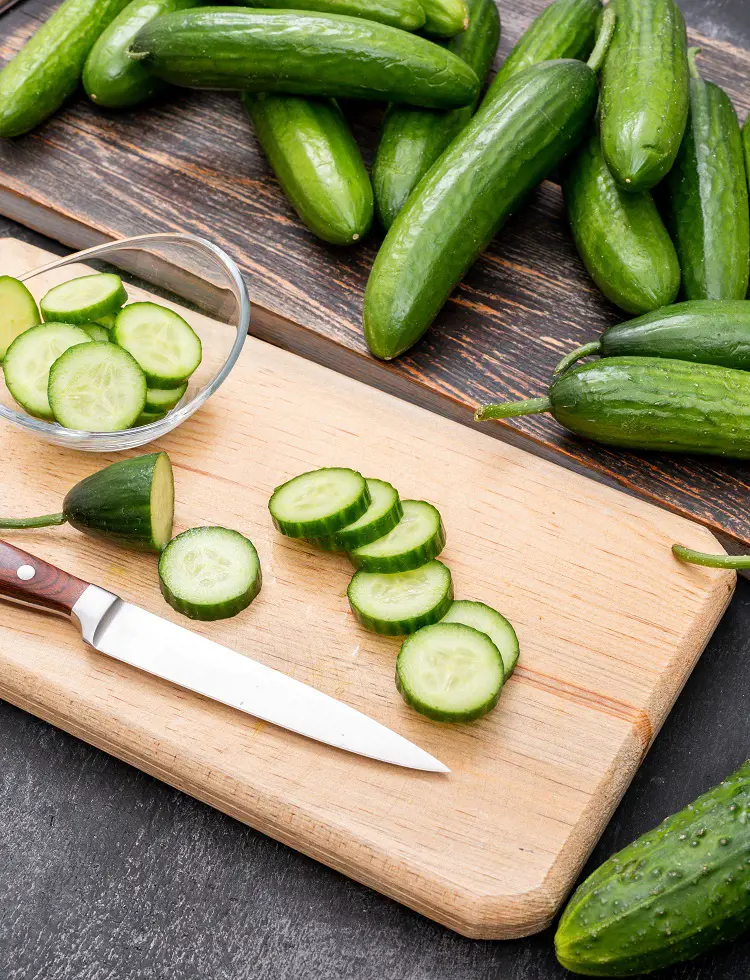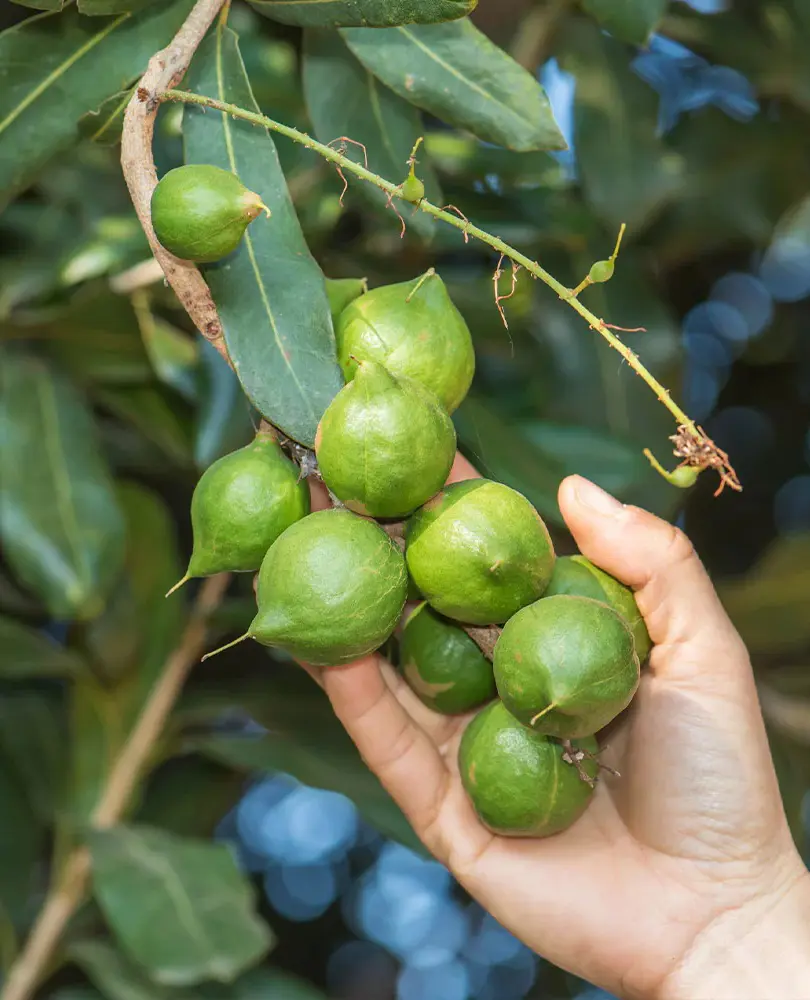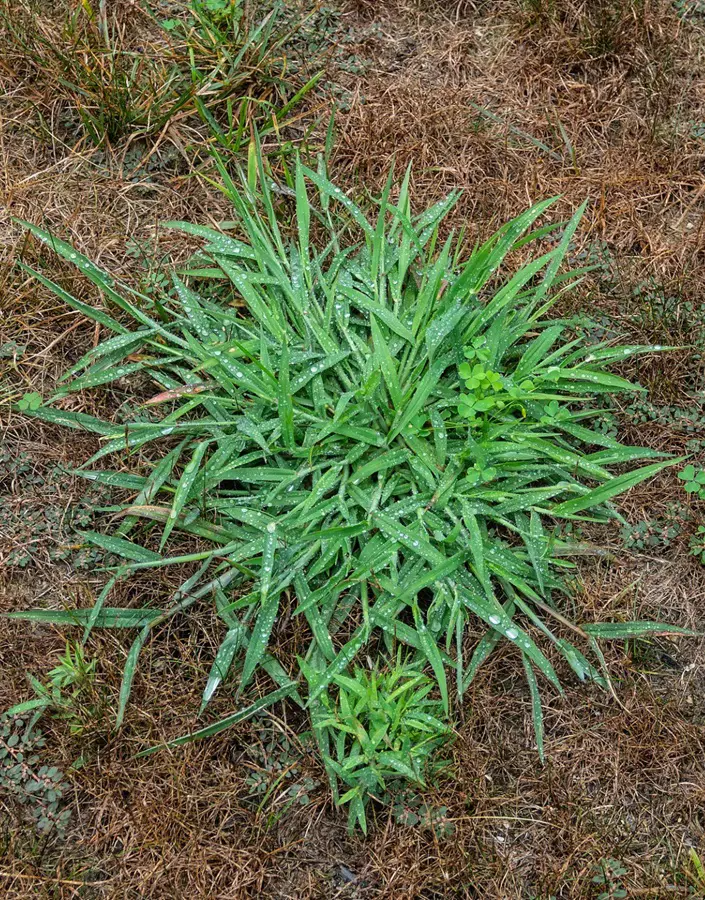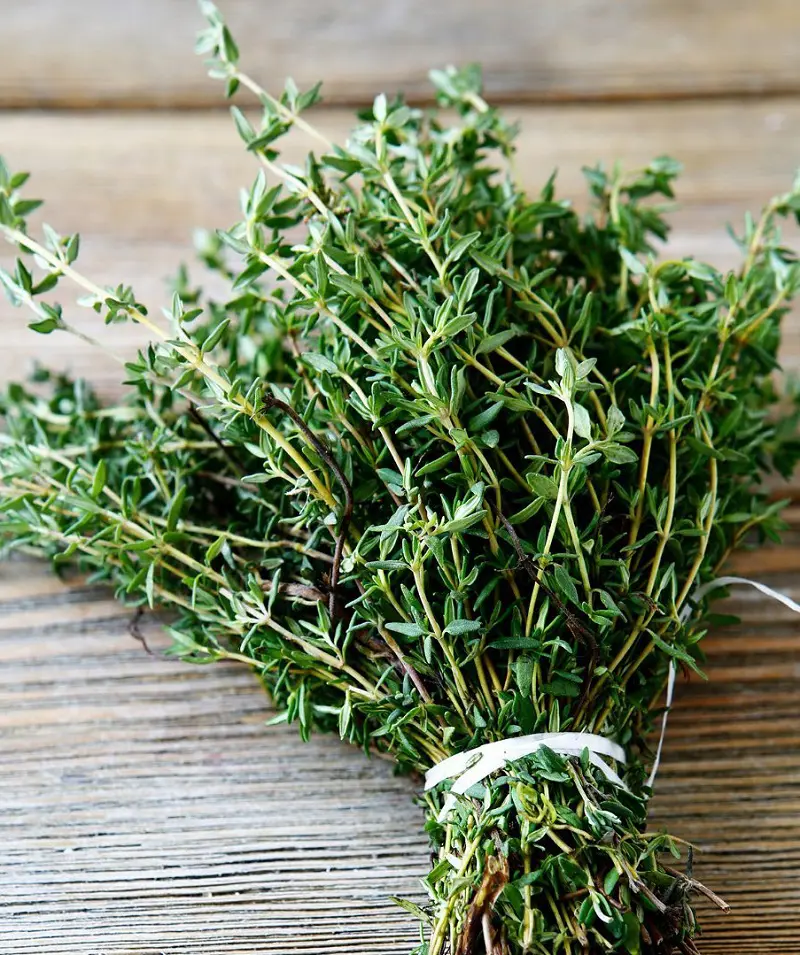
If you are a stickler for cooking your Mediterranean, French, Middle Eastern, and Italian dishes just as the recipe asked, then you know how valuable thyme is. They add flavor and aroma to dishes that are unlike anything.
The only downside to cooking with thyme is you need some on hand at all times. But this is easier said than done because they wilt easily. Therefore, the next best thing would be to use dried thyme.
Dried thyme leaves have just as much impact as fresh ones in recipes, so here is everything you should know on how to dry thyme.
1. Hang Drying
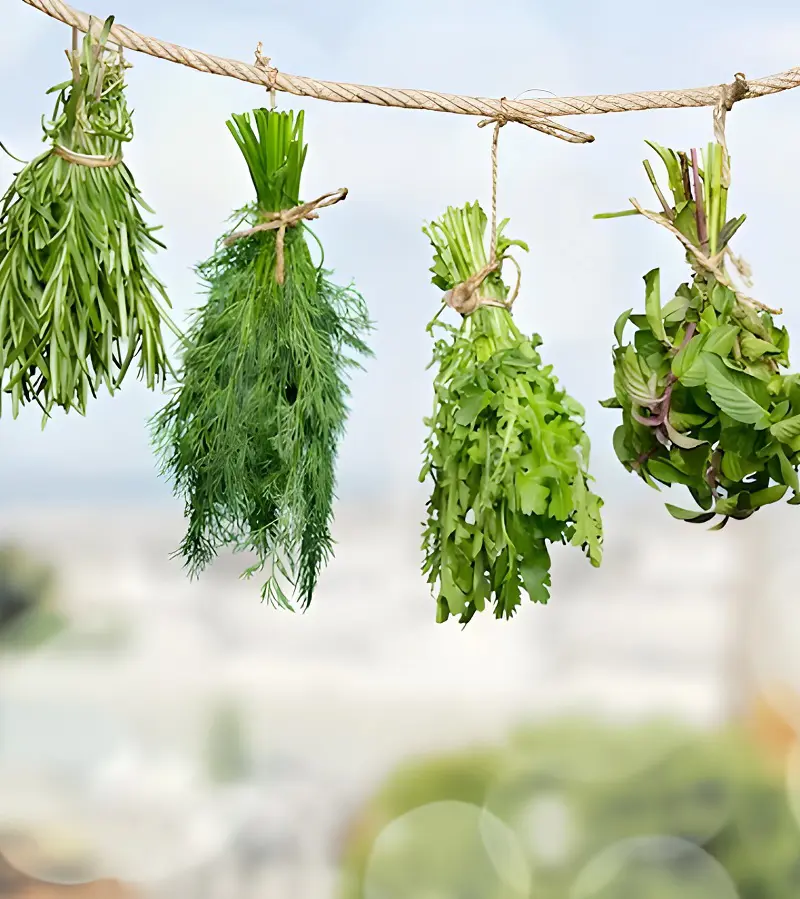
Hang drying is the simplest but takes the longest without compromising the flavors. Tie 3 to 4 stems with enough string to hang the bundles. The bundle should not be too large. If not, it will get moldy. Then, hang the bundles upside down in your kitchen, away from sunlight.
Ensure the kitchen is warm and dry with good airflow. You can even cover it with a paper bag to maintain ideal drying conditions and protect it from dust. Once the leaves are completely dried, run your fingers down the stem to remove the leaves and store them in a mason jar or any other airtight container.
2. Tray Air-Drying
The premise and process of air drying your thyme leaves on a tray is similar to hanging it the hanging method, but it is much quicker, taking only a couple of days to a week max instead of almost two weeks.
Line a baking tray with parchment paper and place the thyme stems on it without overlapping the leaves. Let everything air dry in a hot and dry room. Remember to rotate the leaves every 12 hours for even drying. Then, place the leaves in an airtight container.
3. Oven Drying

A quick method of drying is utilizing an oven, and the following are steps for how to dry thyme in the oven. Preheat the oven as low as it can go. For most ovens, it is between 170°F-150°F. This temperature is a little higher than ideal, so keep the oven door open slightly ajar to allow the moisture to escape.
Spread the thyme in a single layer onto a parchment-lined baking sheet and place in the oven. Check the thyme every 15 minutes or so. Dried thyme leaves should crumble if you pinch them. The thye should dry in an hour, but this depends on how much you are drying.
4. Food Dehydrator Drying
Drying thyme in a food dehydrator depends on drying conditions and methods, but on average, it will take 1-3 hours. Rinse the bunches of thyme in a bowl of water and dry it using a salad spinner or manually blot as much moisture as you can.
Then, arrange the stems on dehydrator shelves and dry them at 95F, rotating the trays every 45-60 minutes. It will take anywhere between one to three hours.
The thyme is ready when it is dry to the touch and crumbly. Let it cool, and remove the leaves of the stem. Finally, store them crushed or whole in an air-tight jar.
5. Microwave Drying
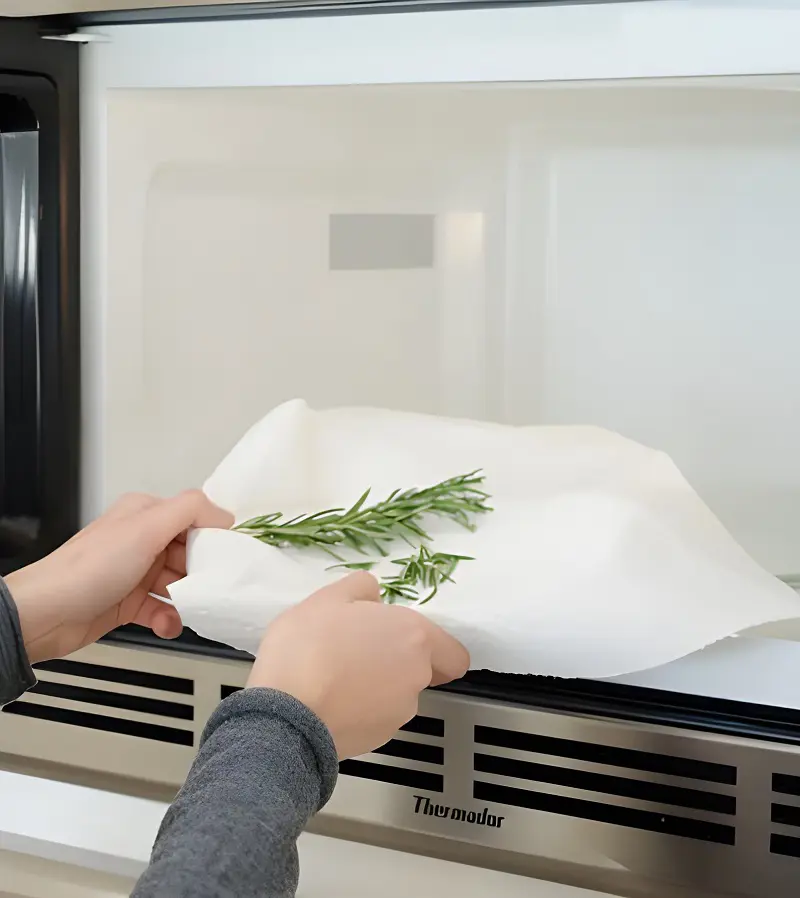
Drying thyme in the microwave is the fastest out of all the methods that require equipment. It produces potent dried herbs with the freshest flavor and the brightest color.
It is best when you are on a time crunch. Pick the leaves off the herbs and spread them on a microwave-safe plate lined with a kitchen towel. Cover the thyme with a clean dish towel, then microwave them.
Do this for 15 to 30 seconds while monitoring the thyme, and repeat this process until the herbs are completely dried. Remove the leaves and place them in an airtight container.
6. Sun Drying
Normally, sun drying is unnecessary and overkill, considering thyme is low in water, making air-drying sufficient. However, air-drying only works in a hot and dry place. Place the thyme leaves on a tray in a sunny area and turn the leaves occasionally to ensure even drying.
From fresh thyme to dried thyme, the process should take around 1-2 days. Cover the tray with a thin muslin-like cloth if your area has birds. Once the leaves are crispy and brittle, store them in an airtight container.
7. Air Fryer Drying
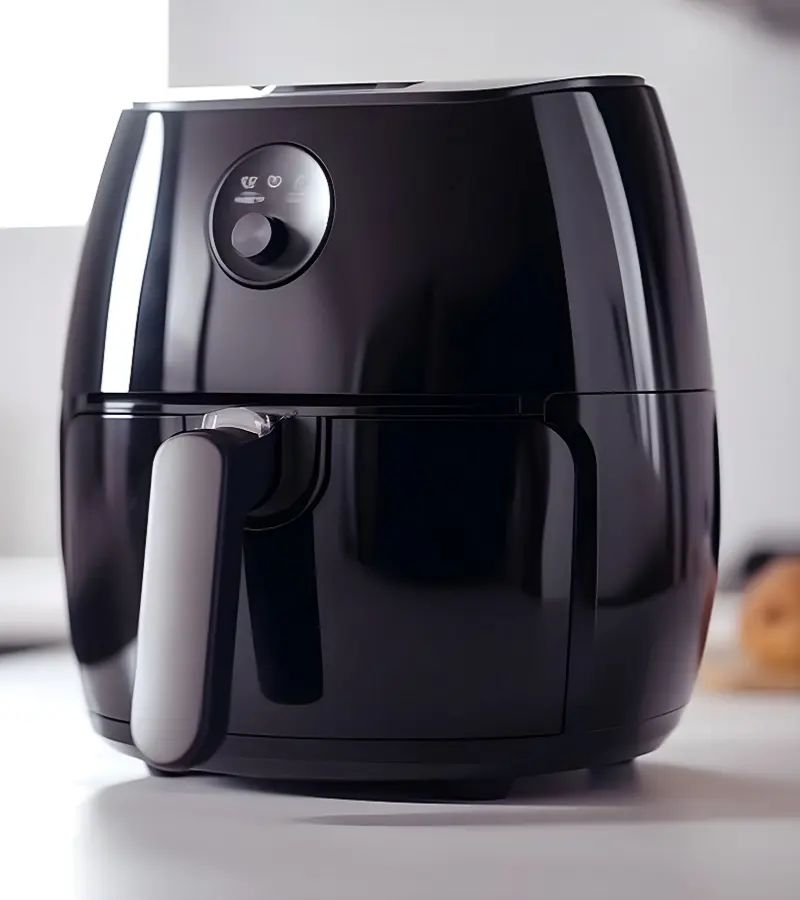
Nowadays, many people have air fryers, and if you are one of them, you are in for quick drying. To dry fresh thyme in an air-fryer, clean and prepare your thyme.
Preheat the air fryer on a low setting, typically around 180°F (82°C). This low setting temperature will help the thyme leaves gently without burning them.
Arrange the leaves without any overlap in a single layer on the air fryer basket or tray to dry for 10-15 minutes with regular checking to prevent over-crisping and store the leaves in an airtight container.
8. Salt Drying
Drying thyme with a salt bed is an effective method for drawing out moisture and preserving herbs. Especially particularly useful in cold or humid climates where other traditional drying methods may be less effective.
Simply spread a layer of coarse salt on a tray, place thyme leaves on top of the salt, and then add another layer of salt on top covering them completely. Once dried, you can remove the herbs and use the flavored salt for cooking. Just remember to use less salt in your dishes.
9. Hanging Paper Bag Drying
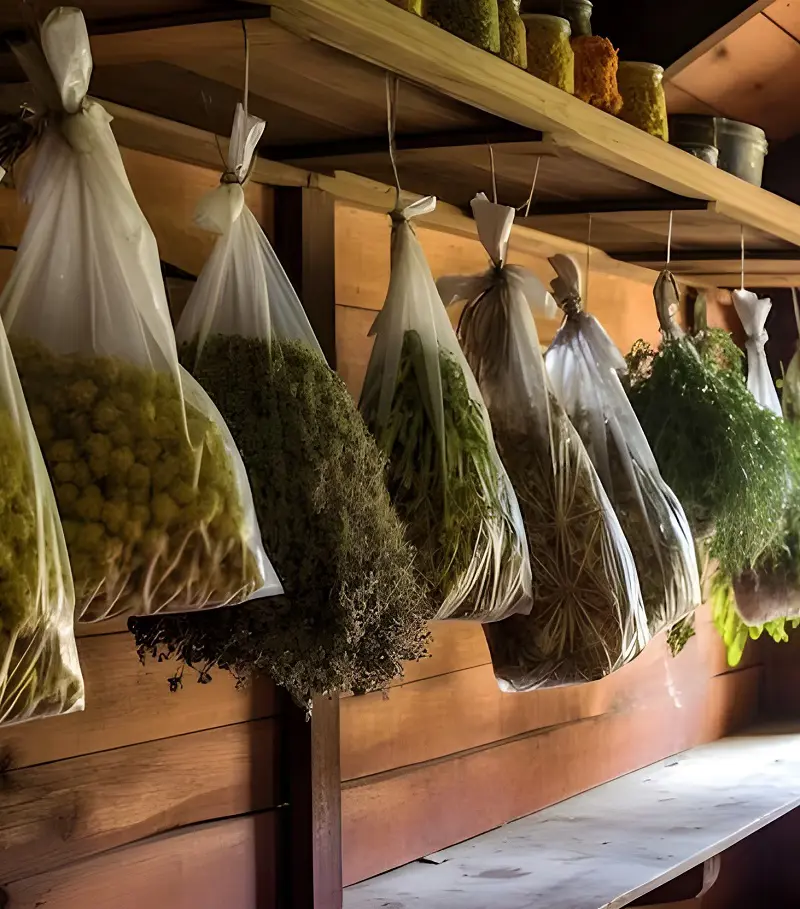
This is a straightforward method. Gather all the thyme stems and place them in a brown paper bag. Tie the top of the bag closed with a string or rubber band while leaving a small but sufficient opening to allow proper air circulation.
Then, hang the bag in a dry, well-ventilated area away from direct sunlight for 1-2 weeks. The paper bag also has the added benefit of protecting the herbs from dust and insects. Once dried, store in an air-tight container.
10. Frost-Free Refrigerator
Another uncommon method, a frost-free refrigerator, creates a dry environment that is effective for drying. Prepare the thyme leaves and spread them out in a single layer on a baking sheet or a clean cloth without any overlap.
Place the tray or cloth inside the frost-free refrigerator on a shelf with good airflow. Do not use this method for non-frost-free refrigerators, which can cause ice damage to the thyme. After 1-2 weeks, take the herbs out and store them in an air-tight container.
11. Press Drying

Continuing with another uncommon herb drying method, press drying is similar to frost-free refrigerator drying. While it is unnecessary for thyme, its original purpose is to preserve delicate herbs that cannot be dried with heat in cold and humid regions.
Place thyme leaves between sheets of absorbent blotting paper and weigh them down using a heavy book. Make sure the leaves are not overlapping or go over the edge. The thyme will be ready in about 2-4 weeks, after which you can remove the herbs and store them in an air-tight container.
12. Clay Pot Drying
Last but not least, we have clay pots or terracotta drying. This traditional method is especially well suited for people living in remote regions and wanting to learn how to dry fresh thyme with low temperatures or high humidity.
Place the herbs inside a terracotta container with its lid slightly ajar for airflow. The porous clay material will absorb the moisture, creating a drying environment. The entire process will take between 1-2 weeks. Once the leaves are dry and brittle, store them in an airtight container.
Step-By-Step Process On Drying Thyme
Drying store-bought thyme is less complicated than ones that are harvested from your garden first. So, if you are drying thyme from the garden, here is a step-by-step detailed instructions on how to dry thyme leaves.
Step 1 - Harvesting and Cutting
Drying thyme requires large volumes, and harvesting such a volume can only be done two to three times per year in the spring or early summer. Ideally, harvest your thyme right before it flowers for the best flavor.
Using clean, sharp shears, clip away big and mature stems, cutting directly above the leaf node. Make sure you take from different sections and not just one location. Avoid taking more than half of the plant at a time, or the plant might become stressed.
Do note that only if you know how to plant, grow, and care for thyme plants will you get a quality harvest, resulting in quality dried thyme.
Step 2 - Preparation
After cutting, separate the leaves from the stems and rinse them under cold water to remove debris and residues. Then, spin them dry in a salad spinner or use a clean kitchen towel to blot off excess moisture until dry.
This helps to prevent molding during the drying process.
Step 3 – Choice of Drying Method
Now, you can move on to drying the thyme. You can use any of the methods mentioned above for dried thyme.
What you choose depends on how much time you have, what is convenient for you, and the equipment you have. Once you have decided, dry the thyme as mentioned above.
How To Store Dried Thyme
Once the thyme is dried, you need to store it properly. Otherwise, it will become stale and flavorless. You can store the dried thyme in glass jars with airtight lids, plastic/metal containers, or vacuum-sealed bags. No matter which one you use, all of them should be tightly sealed to prevent oxidation.
Then, place the contained thyme in a cool, dark place like kitchen cabinets, drawers, or the pantry. Exposure to light and heat degrades the essential oils, color, and quality. Lastly, open the container only when necessary and always tightly seal the container after opening to prevent degradation.
Benefits of Drying Thyme
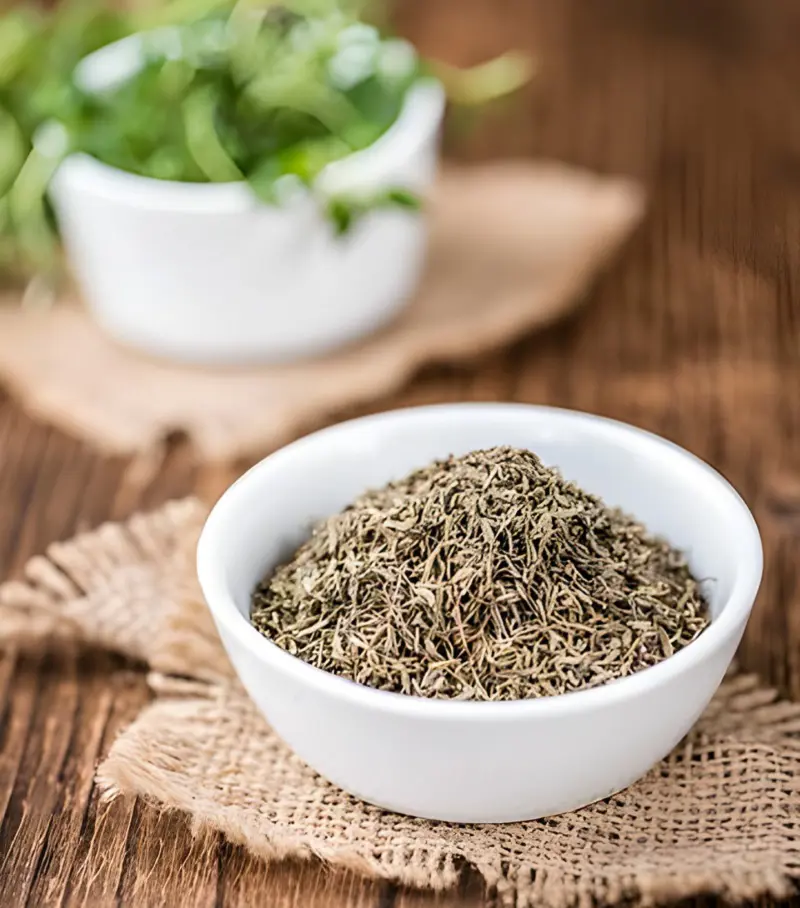
Drying thyme has many benefits and we have enlisted some ways of them below.
1. Extend Shelf-life
Drying thyme extends shelf life because it lasts much longer than fresh thyme which wilts easily. This means you will always have thyme whenever you need it.
2. Intensified Flavor
Drying thyme results in concentrated flavor, making it more intense than fresh thyme. During the drying process, all the water from the herb is removed and only the aromatic oils and flavor remain.
It packs a flavorful punch in any recipe.
3. Convenience
The best part about having dried thyme is convenience. You do not have to worry about spoilage or using it before spoilage to prevent wastage.
It is shelf-stable, unlike fresh thyme. You do not have to rush to the store to buy fresh thyme whenever inspiration strikes in the kitchen.
4. Health Benefits
Fresh thyme has a lot of health benefits thanks to all the nutrients it contains. Thyme is high in minerals essential for good health such as potassium, calcium, iron, manganese, magnesium, and selenium.
During drying, thyme can retain some of these nutrients, resulting in health benefits.
5. Cost-effective
Drying thyme at home is cheaper than buying ready-made ones or relying on fresh thyme because it lasts for a few years. You do not have to spend a single dime on thyme once you have a dried thyme stock.
6. Versatility
With a warm, slightly minty flavor and a hint of lemon, dried thyme is versatile for cooking, baking, and garnishing. It is delicious in soups, pasta, pizzas, and many other dishes. It fits in anywhere just right.
7. Travel-Friendly
If you are the type that travels with herbs and spices because restaurant food is too bland for your liking, you have your dried thyme to the rescue.
You can carry it anywhere and give your food a little makeover without catching any attention.
8. Culinary Experiment
Sometimes fresh thyme can overpower dishes with aroma and flavor. This is especially inconvenient when you are experimenting with thyme in your cooking.
In such instances, it is better to use dried thyme. Dried thyme can elevate a dish without overpowering everything else.
9. Easy Storage
Dried thyme is easier to store fresh thyme. Fresh thyme requires specific light, air, and moisture to prevent it from wilting quickly.
Meanwhile, dried thyme is stored in a container and can be kept on shelves and drawers without much consideration.
How Long Does Dried Thyme Last
When stored correctly, dried thyme can maintain its quality for six months to 1 year. To maintain its quality, keep it in an airtight container and place it in a cool, dark, and dry location, such as a pantry or cupboard.
Although dried thyme does not decay and thus remains safe to use beyond its self-life period, its aromatic qualities and flavors would have all but diminished, which makes the entire point of using thyme in your cooking moot.



